For decades, the traditional SIM card has been a key enabler of mobile connectivity, but its reign is coming to an end because eSIM technology is making it possible for MNOs to onboard new customers more conveniently than ever before by offering several eSIM activation methods.
MNOs need to efficiently activate a new range of devices
According to Counterpoint, eSIM devices will grow to 6 billion by 2025 from 1 billion in 2020, with eSIM-only devices like the iPhone 14 or the Microsoft Surface Pro paving the way for an era of out-of-the-box connectivity.
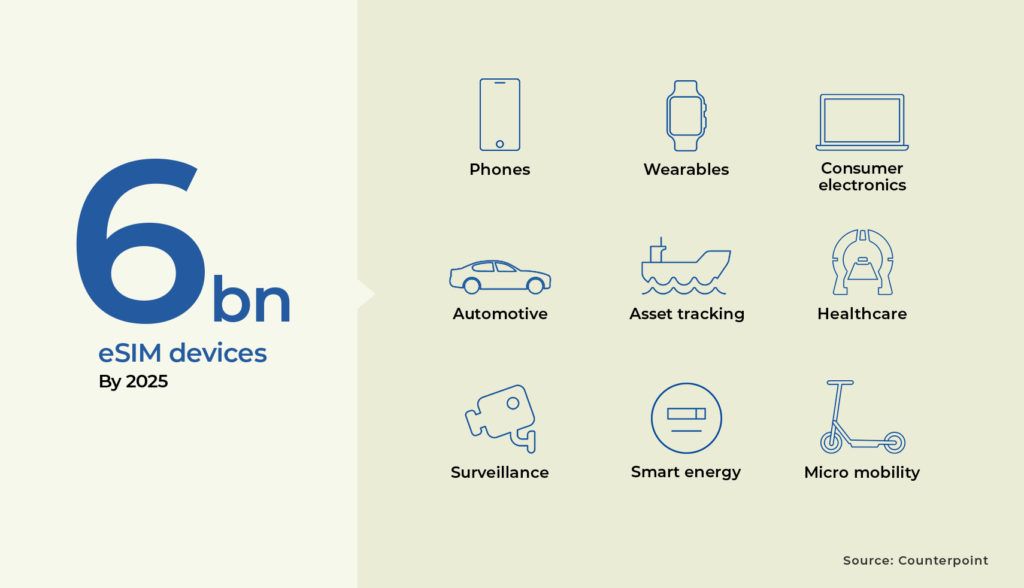
“The number of new cellular-connected devices isn’t just increasing—it’s growing at an exponential rate across the globe, mobile network operators will quickly need to manage a new range of devices across their subscriber base.”
Robert Varty, CSO
With the removal of the traditional SIM from devices, the embedded SIM brings a host of digital marketing and distribution opportunities for the network operator who is relieved of heavy time, resource and cost consuming activities involved in the management of the physical SIM card such as manufacturing, distribution and even retail. The question is which distribution and activation method should an operator choose?
We recommend a phased approach starting with the easiest to implement first before to establish market presence and gain vital subscriber growth earlier on before considering what’s ultimately best for the long-term.
Here’s a quick overview of the main options
1. QR code-based eSIM activation method
One fairly low-tech eSIM activation method that MNOs can implement involves physical or digital QR codes given to each new subscriber. This method integrates easily with existing infrastructures, and it requires the least back-end unification with systems and third parties.
To activate an eSIM-based mobile subscription using a QR code, a process that involves the downloading of the corresponding eSIM profile from the eSIM subscription management server where the eSIM profile is stored, several pre-requisites must be met.
Traditional QR code
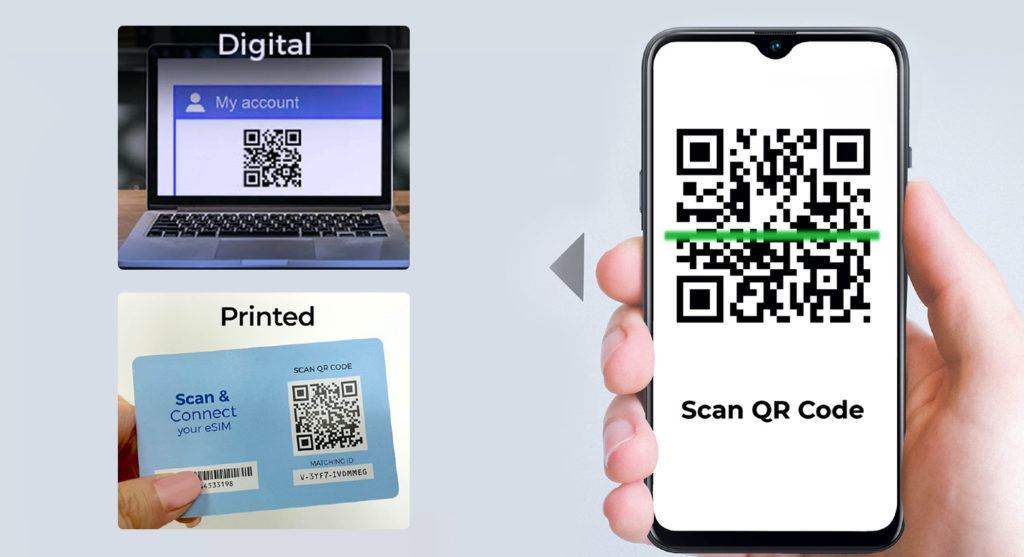
The activated device must be connected to the eSIM subscription management server, which can be done via Wi-Fi or an eSIM bootstrap profile. Next, the Local Profile Assistant (LPA) service must be embedded in the device by the OEM vendor. Finally, the actual QR code must somehow be distributed to the subscriber (paper vouchers or an online portal are both good options).
Workz’s Universal QR code
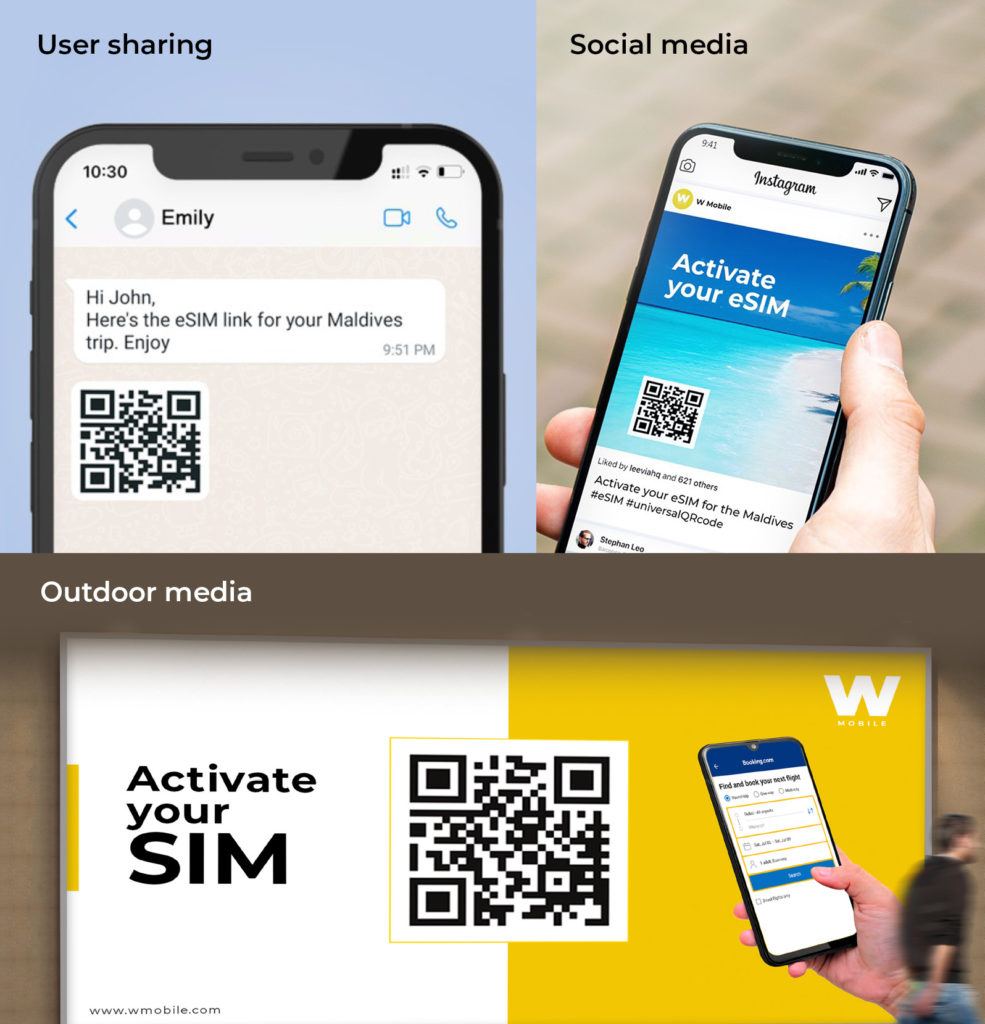
In the case of Workz’s Universal QR code, then the network operator does not require to distribute a unique QR code for each eSIM profile. Instead, a generic QR code is used and once scanned the system dynamically assign a unique eSIM profile to each user. This universal QR code solution heavily streamlines the management of activation codes and lends itself to new marketing opportunities for the network operator such as being able to advertised on billboards or promoted online.
2. Default SM-DP+ Address Set in the eUICC
Operator-branded devices can be pre-provisioned with the address to the operator’s remote SIM provisioning platform (SM-DP+) to automatically retrieve the correct subscriber profile when launched for the first time.
This eSIM activation method is convenient for end-users because it ensures a seamless activation experience with minimum effort required. But to deliver this experience, MNOs need to work hand-in-hand with OEMs to customize their devices. The customization process can generate additional costs for MNOs and limit their ability to maintain a competitive product inventory.
In markets with high post-paid penetration, such as the United States, this method can be an excellent fit, but it should be avoided in markets where customers are not used to purchasing operator-subsidized devices because it doesn’t work for non-subsidized devices.
Out-of-the-box connectivity
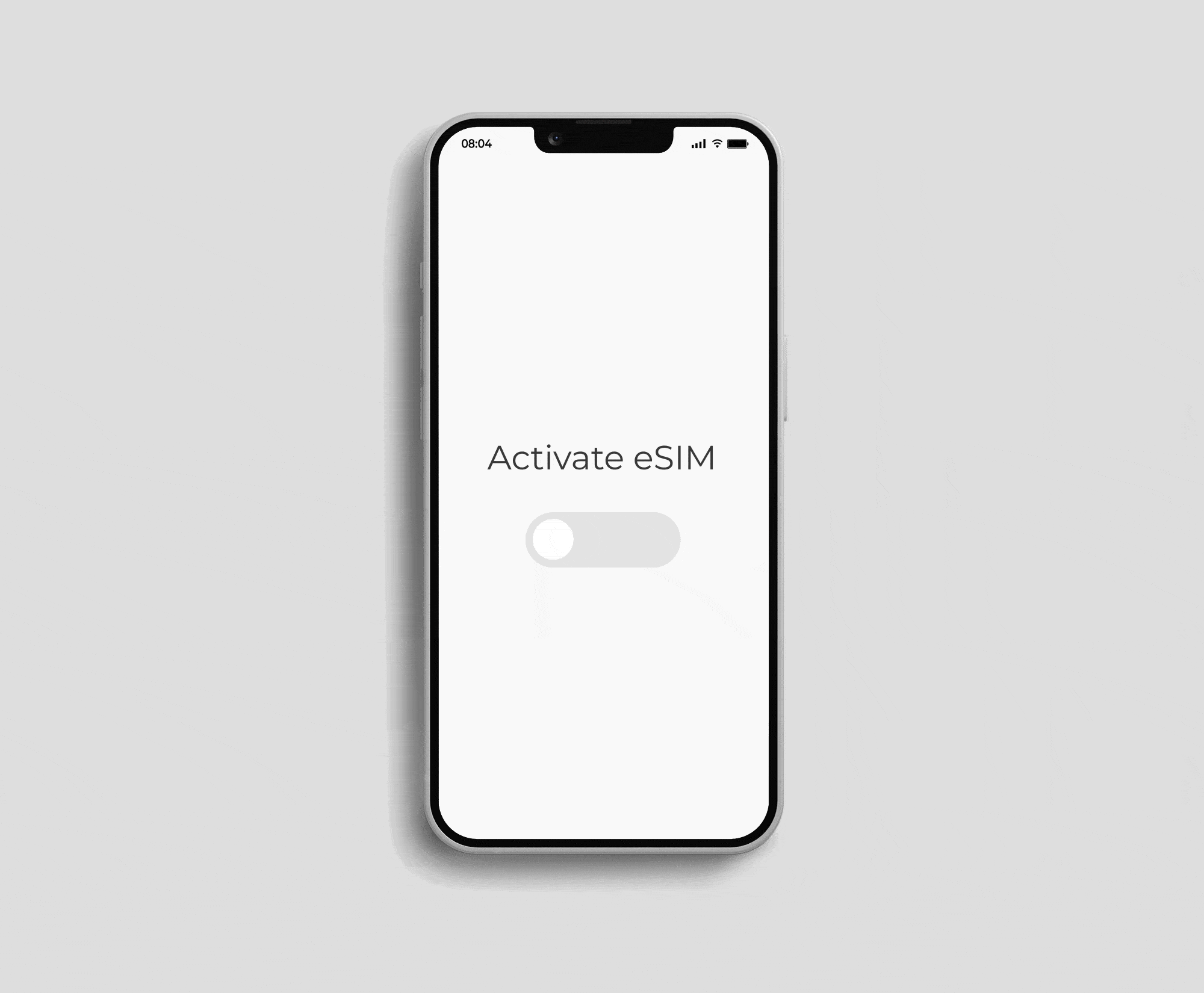
3. Discovery service-based eSIM activation method
Another eSIM activation method available to MNOs is called Subscription Management Root-Discovery Service (SM-DS).
Discovery service-based eSIM activation has been available since 2017, and it makes the adoption and activation of eSIM devices simpler because it doesn’t require a QR code to be scanned by the activated device, enabling the activation of devices that don’t have a camera. What’s more, it works even with open market consumer eSIM devices, so customers can separate the purchase of a mobile subscription from the purchase of the device itself.
Currently, there are three types of discovery services available to MNOs:
- GSMA eSIM Discovery service
- Apple Lookup Service
- Custom discovery services
eSIM activation options
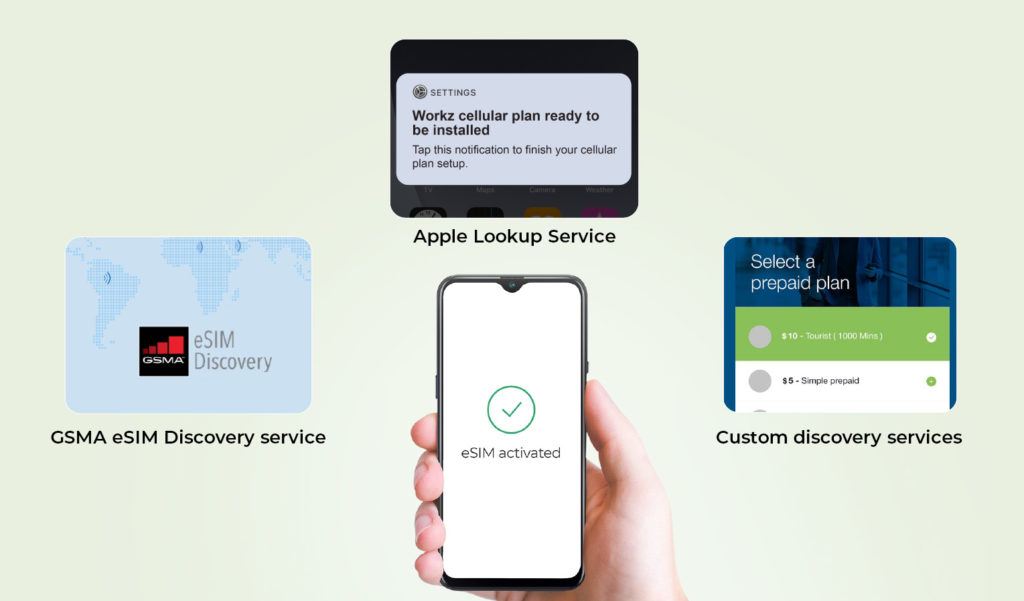
The discovery service is essentially a central hub to which devices can connect to download their mobile subscription without the need for integrations between MNOs and OEMs. This way, discovery service-based eSIM activation provides a simple out-of-the-box mobile subscription activation process that’s also easy to implement.
Apple Lookup Service
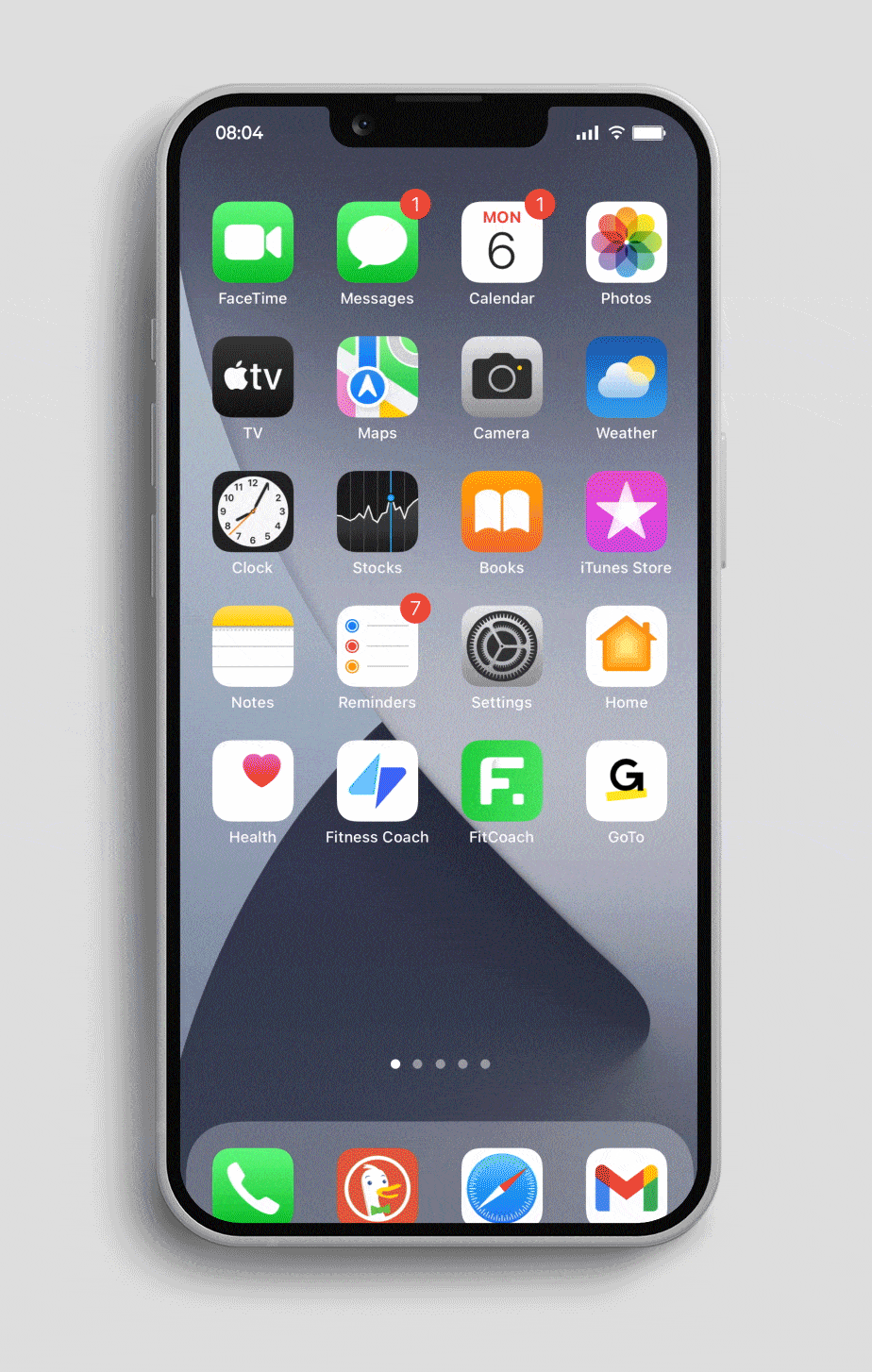
Custom discovery services

Does the type of device affect the activation method?
If you also consider, many new consumer eSIM devices may need additional or different process for subscriptions to be activated then you realise it is important that MNOs to familiarize themselves with available activation methods for eSIM devices so they can choose the one that best meets their needs, for example, if they wish to cater for companion devices such as the Apple Watch then an Entitlement server is required. For some Consumer IoT devices which do not have cameras or even screens then a custom-built discovery service may be the only solution.
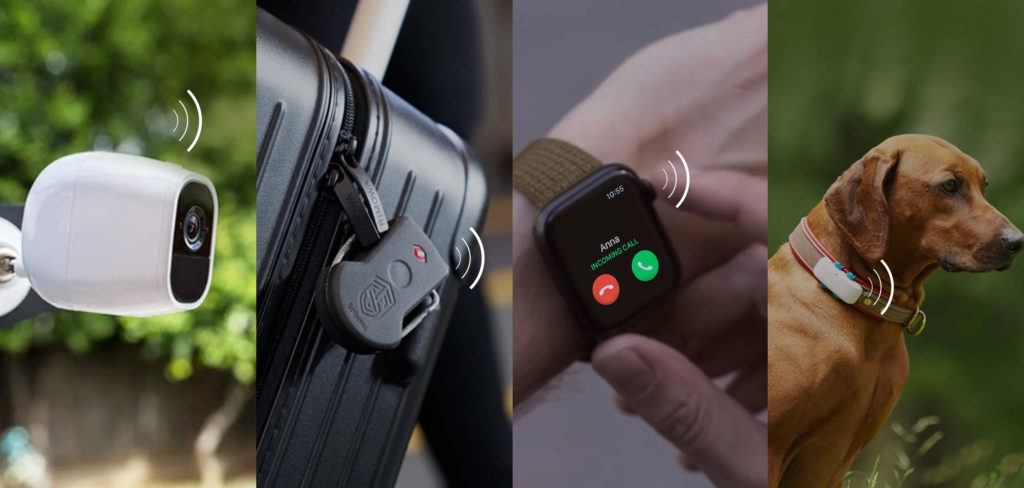
Grow you subscriber base with next-gen eSIM solutions
A leader in eSIM subscription management solutions like Workz can make it easy for MNOs to solve the challenge of subscriber growth by offering a suite of relevant options. At Workz we are the leader in eSIM cloud and offer a suite of next-gen eSIM solutions from a hybrid eSIM management platform catering to both consumer and M2M devices, an overlay system to integrate multiple vendors, partners and clients as well as an entitlement server solution and a host of discovery services.
Workz’s next-gen eSIM solutions

Discover the best way to activate the growing number of eSIM devices on your network, get in touch below.


